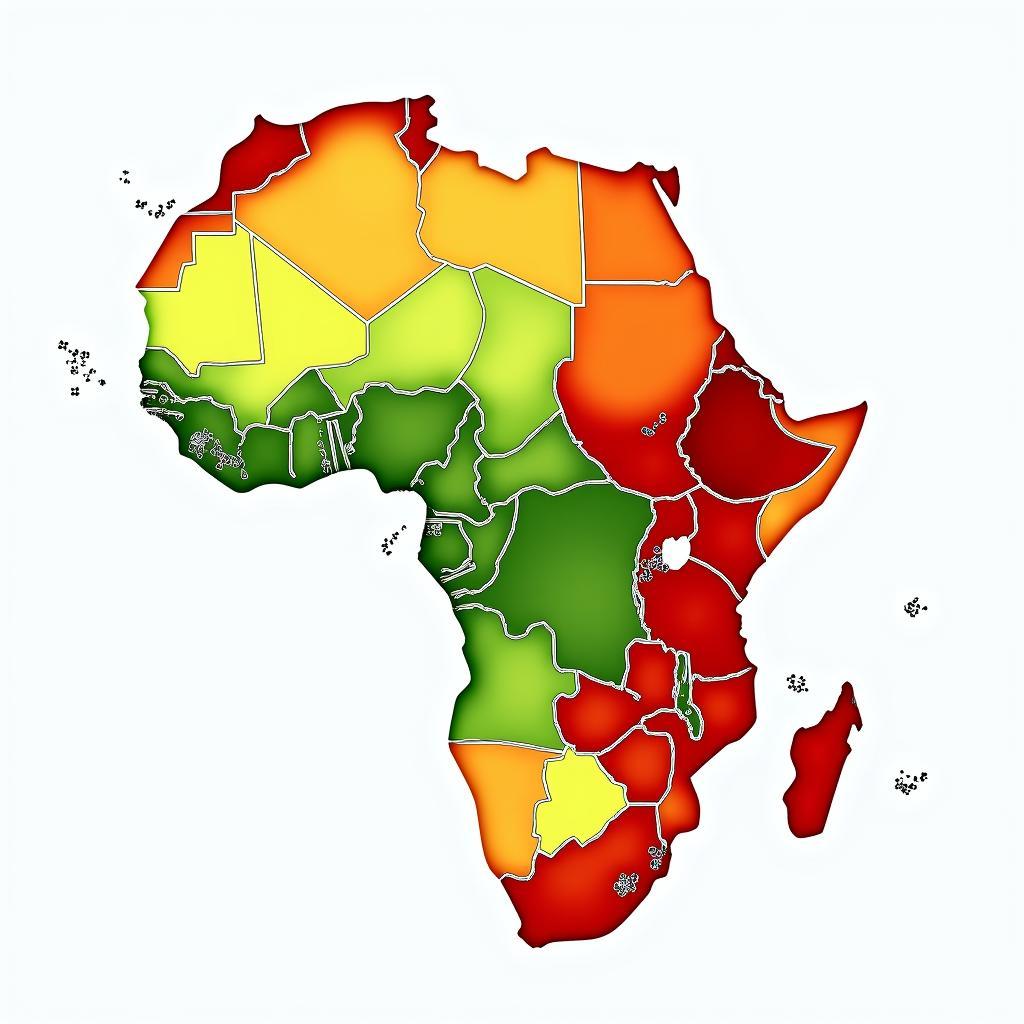Difference Between Indian Elephant and African Elephant
The key difference between Indian elephants and African elephants lies in their size, ear shape, and tusk presence. While both are majestic creatures, understanding their distinct characteristics is crucial for conservation efforts. Let’s delve into a detailed comparison of these two fascinating species.
Size and Physique: A Tale of Two Giants
African elephants are the largest land animals on Earth, significantly bigger than their Indian counterparts. A bull African elephant can reach heights of up to 13 feet at the shoulder and weigh over 6 tons. Indian elephants, on the other hand, typically reach 9-10 feet tall and weigh around 5 tons. This difference in size is a key factor in distinguishing the two species. Female African elephants also have tusks, whereas only some male Indian elephants possess them. Furthermore, the back of the African elephant is concave while the Indian elephant’s back is convex or level.
Ear to Ear: Distinctive Shapes and Sizes
Another distinguishing feature lies in the shape and size of their ears. African elephants have large, fan-shaped ears that resemble the shape of the African continent. These ears help them regulate body temperature in the hot African savanna. Indian elephants have smaller, more rounded ears. This distinct difference is readily apparent and serves as a quick visual identifier. You can find more resources about African elephants on our website, including african elephant pictures free.
What makes African elephant ears so large?
The large ears of African elephants play a critical role in thermoregulation, allowing them to dissipate heat effectively in the hot African climate.
Tusks: A Matter of Gender and Species
Both male and female African elephants typically have tusks, while only some male Indian elephants possess them. Tusks are elongated incisor teeth used for digging, foraging, and defense. The presence or absence of tusks, along with their size and shape, can help differentiate between the two species. For example, African elephant tusks are generally larger and more curved than those of Indian elephants. There’s even more information available if you are interested in comparing the size of African elephants to humans: african elephants humans size comparison.
Habitat and Distribution: Continents Apart
As their names suggest, these elephants inhabit different continents. African elephants are found across sub-Saharan Africa, while Indian elephants roam through parts of Asia, including India, Sri Lanka, and Nepal. Their distinct habitats have shaped their evolutionary paths, leading to the physical differences we observe today. Thinking about visiting Africa or India? Consider these perspectives from people who have lived there: african in india quora.
Dr. Asha Sharma, a leading elephant biologist, notes, “The varying environmental pressures faced by African and Indian elephants have led to the development of distinct physical adaptations, showcasing the power of natural selection.”
Trunk Talk: Subtle Differences in Dexterity
While both species have incredibly versatile trunks, there are subtle differences in their dexterity. The African elephant’s trunk has two finger-like projections at the tip, allowing for finer manipulation, while the Indian elephant has only one. This difference allows the African elephant to pick up smaller objects with greater precision.
Have you ever wondered about the future of elephants and technology? Explore our page on augmented reality and elephants: african elephant ar. Or, if you are concerned about their conservation status, learn more about the endangered African forest elephant: african forest elephant endangered.
Conclusion: Celebrating the Diversity of Elephants
The difference between Indian elephants and African elephants extends beyond their physical characteristics, encompassing their habitats, behaviors, and evolutionary histories. Understanding these differences is essential for appreciating the unique beauty and ecological importance of both species. By recognizing and celebrating their diversity, we can better contribute to their conservation and ensure their survival for generations to come.
FAQ
- Which is bigger: the African or Indian elephant? African elephants are significantly larger than Indian elephants.
- What is the main difference in their ear shape? African elephants have large, fan-shaped ears, while Indian elephants have smaller, rounded ears.
- Do all elephants have tusks? Both male and female African elephants usually have tusks, but only some male Indian elephants have them.
- Where do African elephants live? African elephants are found across sub-Saharan Africa.
- Where do Indian elephants live? Indian elephants live in parts of Asia, including India, Sri Lanka, and Nepal.
I’m describing common situations where these questions might arise:
- Someone planning a safari trip to Africa may want to know the size difference between African and Indian elephants to prepare for their encounter.
- A student researching elephants for a school project would need to distinguish between the two species based on their physical characteristics.
- A conservationist might be interested in the habitat and distribution of each species to understand their specific conservation needs.
Here are a few other questions or articles that might be of interest:
- How do elephant social structures differ between the two species?
- What are the major threats facing African and Indian elephants?
- The impact of habitat loss on elephant populations.
When you need support, contact Phone Number: +255768904061, Email: kaka.mag@gmail.com Or visit our address: Mbarali DC Mawindi, Kangaga, Tanzania. We have a 24/7 customer support team.

